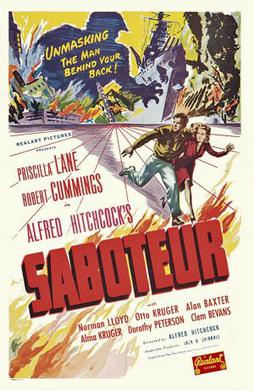 |
| Judith Anderson and Joan Fontaine in Rebecca |
Maxim de Winter: Laurence Olivier
Mrs. Danvers: Judith Anderson
Jack Favell: George Sanders
Frank Crawley: Reginald Denny
Major Giles Lacy: Nigel Bruce
Colonel Julyan: C. Aubrey Smith
Beatrice Lacy: Gladys Cooper
Mrs. Van Hopper: Florence Bates
Coroner: Melville Cooper
Dr. Baker: Leo G. Carroll
Director: Alfred Hitchcock
Screenplay: Robert E. Sherwood, Joan Harrison, Philip MacDonald, Michael Hogan
Based on a novel by Daphne Du Maurier
Cinematography: George Barnes
Art direction: Lyle R. Wheeler, William Cameron Menzies
Music: Franz Waxman
Rebecca is a very good movie. Would it have been a better one if Alfred Hitchcock, directing his first American film, had been left alone by the producer, David O. Selznick, an incurable micromanager? That's the question that lingers, especially since Hitchcock later expressed some dissatisfaction with the film. It does lack the director's sense of humor, manifested for example in the scene in which the horrid Mrs. Van Hopper snuffs a cigarette in a jar of cold cream, a gag Hitchcock liked so much that he used it again 15 years later in To Catch a Thief, in which the substitute ashtray is a fried egg. The differences between Hitchcock and Selznick largely lay in the realm of editing, in which Selznick loved to dabble, insisting that scenes be shot from various camera angles to give him latitude in the editing room. Hitchcock was a famous storyboarder, working out scenes and planning camera setups well in advance of the actual shooting -- "editing in the camera," as it's usually called. The story would probably also have been very different in the Hitchcock version: According to one source, the original version suggested by Hitchcock began on shipboard, with various people being seasick. Selznick, however, liked to stick closely to the novels on which he based his films: The opening title, for example, refers to the movie as a "picturization" of Daphne Du Maurier's bestseller. (This was doubtless a comfort to Du Maurier, who hated Hitchcock's version of her novel Jamaica Inn (1939) -- but then so did Hitchcock, and both of them were right to do so.) The glory of Rebecca lies mostly in its performances. Although Laurence Olivier never makes Maxim de Winter a fully credible character -- I think he felt he was slumming, doing the film only to be near Vivien Leigh, and disgusted when Selznick didn't cast her as the second Mrs. de Winter -- he was always a watchable actor, even when he wasn't doing a great job of it. Joan Fontaine is almost perfect in her role, making credible the crucial character switch, when she stops being shy and stands up to Mrs. Danvers. And Hitchcock must have loved working with the gaggle of British character actors who had flocked to Hollywood and populate all the supporting roles.



